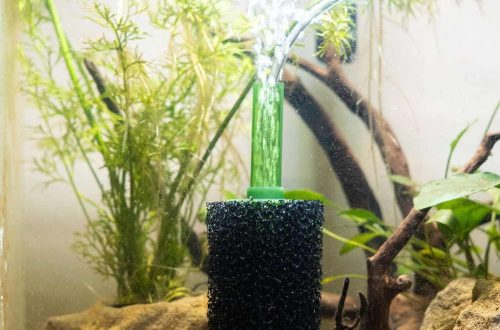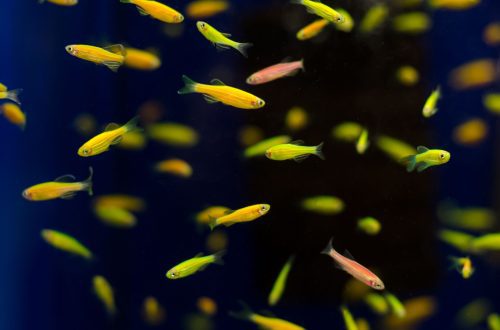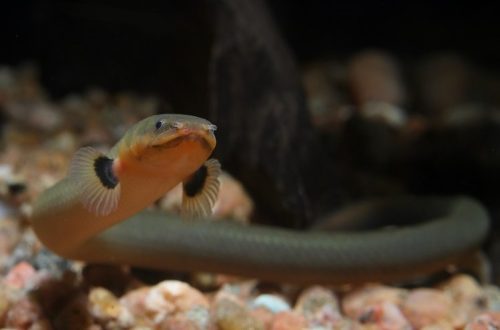
Angelfish: keeping angel fish
An angel fish or an angel fish fascinates with its grace and beauty, and even a novice aquarist can handle keeping an angelfish at home. But the hasty acquisition of these amazing creatures is often accompanied by errors in providing conditions for them. We will warn fans of angelfish against annoying blunders and tell you about the distinctive features of angelfish varieties.
Angelfish are a South American cichlid, a territorial fish that can be aggressive towards aquadom neighbors. By the age of one year, angelfish reach sexual maturity and begin to show intraspecific aggression. Therefore, we recommend starting an adult formed pair of angelfish, a male and a female. Or take a few fry, see how they break into pairs, and distribute to other aquarists or put those individuals who are out of work in another aquarium.
Attention is drawn to the compressed disc-shaped body shape of the scalar. In our latitudes, this seems exotic, but it is such a body that allows fish to slip between the stems of underwater plants in search of food.
The most important requirement for keeping angelfish is a spacious aquarium, high, fairly wide and long.
Two adults must be provided with an aquarium with a volume of one hundred liters and a height of at least 45 centimeters for personal use. Angelfish need space from an early age to spread their wings and grow into a wonder of nature that you can enjoy for years to come. When you see discussions on thematic forums in the spirit of “angel fish dragged on”, the point is that in the case of these angelfish, the maintenance and care left much to be desired, the poor fish were kept in a small container for too long, so they did not grow to the desired size of the body, the fins did not open properly. The angelfish should grow large, sweeping, up to 15 centimeters long and up to 25 centimeters high.

Angelfish are accustomed to the waters of their native Amazon, which is why they prefer water with hardness and acidity levels below seven in aquariums. They live in clear or silty waters with not too intense currents and impressive underwater flora. Therefore, it is better for fish to provide diffused lighting. Underwater flora and picturesque driftwood will help darken some areas. Among long-stemmed plants like vallisneria, angelfish will feel at home. Angelfish like to be darkened, but do not need an abundance of caves, grottoes and other shelters, make sure that underwater angels have enough space for swimming. The angelfish is phlegmatic and far from trying to escape from the aquarium, the angelfish aquarium does not need to be covered with a lid.
With whom can you settle a scalar? First of all, make sure that the dimensions of the aquarium allow you to expand the number of pets. Angelfish get along well with swordtails, catfish corridors, sturisomes, synodontis. Thorns, mollies, platies are suitable. But smaller fish, like guppies or neon, angelfish can peck or even taste.
Like all aquarium fish, angelfish do not tolerate high concentrations of nitrogenous compounds. Monitor water quality with drip tests. Filtration and aeration in the aquarium should also be present, but the current should not be too powerful. Once a week, you need to replace about a third of the water in the aquarium with fresh water. When using tap water, it is highly desirable to use conditioners that neutralize harmful substances. Most varieties of angelfish feel great at temperatures from 22 to 27 degrees.
If the owner takes care of the fish, controls the quality of the water in the aquarium, the health of the wards and makes up a varied diet for them, the angelfish will delight him with their company for more than 10 years.
Scalars are unpretentious in food. Specialized dry food is suitable for them, preferably in the form of flakes or chips, so that they have time to pick up food before it sinks to the bottom. Live food is also suitable – brine shrimp, bloodworms. Aquarists note that young angelfish grow well on live food like cyclops and daphnia.
Angelfish species are the main varieties of angelfish that can be found in aquariums, we will focus on the two most popular species. Breeding morphs are angelfish breeds, fish with an unusual appearance, the fruit of the work of breeders. One species can have many morphs.
The common angelfish is the most common, with nine out of XNUMX angelfish in aquarium houses being members of this species. The amount of her morphs is amazing. Let’s list some of them. The koi angelfish (pictured) is named after the similarity in color to koi. The breeders have developed the theme of red in color in the red devil scalar, which needs food with carotenoids to maintain brightness.
The unique black and white color of each marbled angelfish will never allow you to confuse individuals. The leopard angelfish with a spotted golden-black color resembles a wild cat. Black scalars are very popular, they look like a piece of black velvet floating in the water column. The golden angelfish is distinguished by golden scales on the upper body and a silvery-white lower half of the body.

The Altum angelfish species is famous for its impressive size and gracefulness of its representatives. However, they are almost never bred in captivity. You can imagine how difficult it is to acquire them. The question is that under the guise of Altums, aquarists are often offered morphs of the most common angelfish. Both real Altums and pseudo-Altums are offered in the form of fry, when it is still not clear whether this is a true Altum or a cunning trick.
How to choose a real Altum? It is advisable to purchase it in an adult state, so as not to be mistaken. The largest and most majestic species of angelfish, they are much larger than artificial morphs. Their distinguishing features include four large vertical stripes, a brownish-silver color, and long fins. Pay attention to the muzzle. When compared with a regular scalar, we can say that the Altum has a snub nose. The price of real Altum will not be suspiciously low. Altums are more demanding in terms of content.
When you acquire angelfish fry, it is impossible to determine their gender. Closer to the age of one year, you can take a closer look at the fish. The only reliable way to know the sex is the line of the back and abdomen. In the male, the line of the back forms an angle with the fin, while the abdomen and fin are folded into a kind of straight line. The lady scalar is the opposite.
In good conditions, the couple starts spawning without much additional incentives. In nature, angel fish are caring parents who protect the masonry. But in the general aquarium, the eggs usually die. Plus, stress due to an unfavorable situation in the aquarium (unsuitable neighbors, water pollution, overpopulation of the aquarium) can lead to the fact that the newly-made parents themselves will destroy the offspring.
If you want to leave the fry of the angelfish, it is better to take the leaf with the laid eggs as soon as possible and transfer it to a pre-prepared aquarium with plants, preferably without soil and with a moderate current. At the disposal of the offspring of the scalar is the yolk sac in the eggs. When the kids begin to swim, you can feed them several times a day with brine shrimp, ciliates. The question is, what will you do with dozens of fry when they grow up?
We wish your angelfish to be healthy and delight you with dancing in the aquarium for many years!





